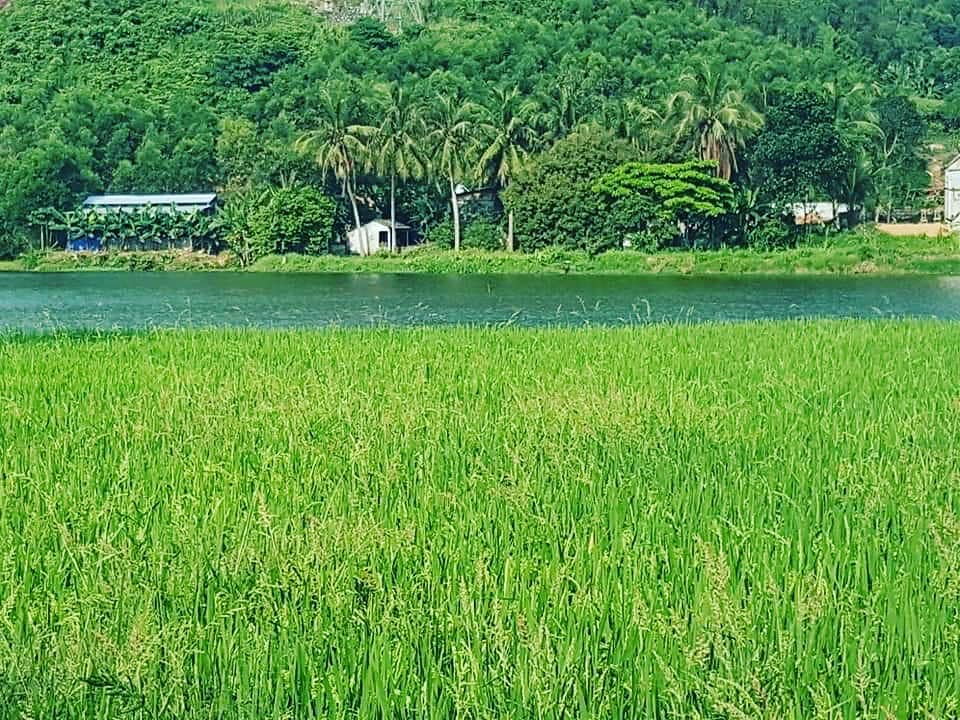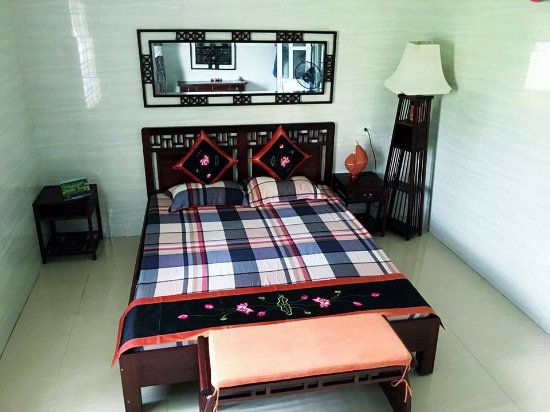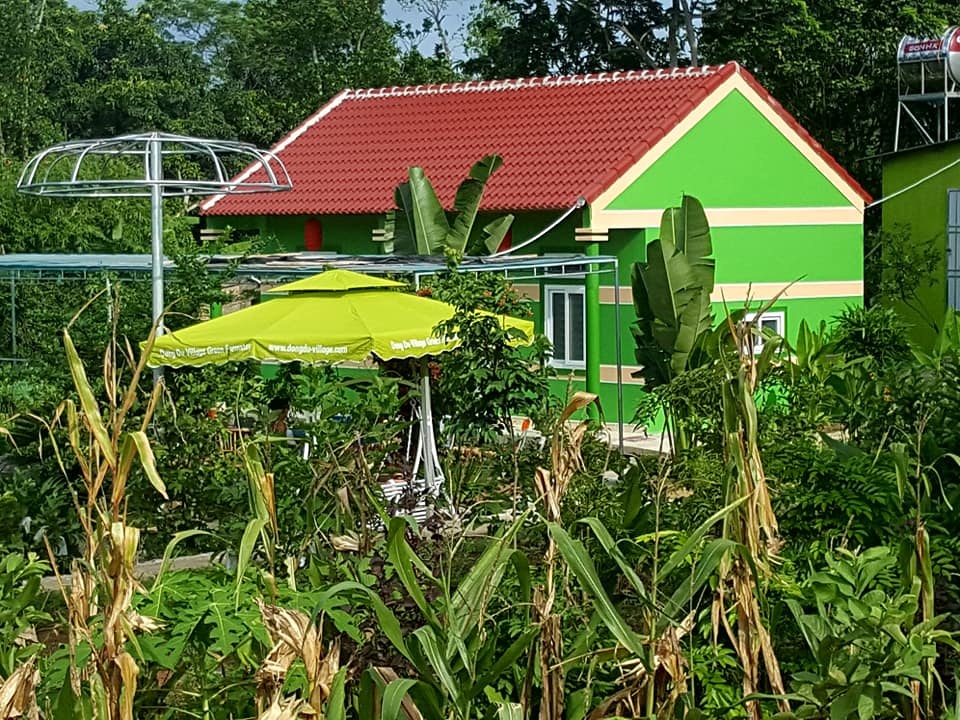Travel Blog
Dong Du Village Lakeside Farmstays
Pu Mat Natural Park - Western Nghe An
Updated: 28/3/2020 | 10:00:41 PM
Nature is always powerful and gorgeous. Despite being exploited and negatively influenced by people, our mother of nature still has a way to hide somewhere on the Earth some of the extraordinary beauties that haven’t been touched by any signs of living things. One of them that can be mentioned is Pu Mat National Park in Vietnam.
Pu Mat National Park is located in the middle of Annamite Range in Nghe An, about 350km away from Hanoi, a province in the middle region of Vietnam. Originally known as Pu Mat National Reserve, it stands along three districts including Anh Son, Con Cuong and Tuong Duong. What’s more, Pu Mat national park is in the tropical monsoon climate zone, which explains why Pu Mat boasts amazing biodiversity in its wet forests with 2500 plant species and 1000 animal species. To most of the scientists, Pu Mat is too famous for being the first place to discover a rare species “Sao la” (Saola), a long-horned bovid. Together with many unique animals, the primitive forest also has many beautiful landscapes. Among the favorite destinations are the 150 meter Kem Waterfall, Giang River and ethnic minority villages in the forest such as Thai, Tho, Dan Lai and H’Mong.
According to Thai ethnic people, “Pu” means the mountain peak. “Pu Mat” is the highest mountain peak in this region with the height of 1,814 meters. With a huge area covering three districts, Pu Mat has three typical weather seasons. From December to March, it would be cold when the temperature is less than 20 degree Celsius, whereas it will be sunny from April to July and rain heavily from August to November. Therefore, summer time is the best period you can enjoy visiting this attractive destination without paying for the entrance fee.
One of the most famous places in Pu Mat National Park is Kem Waterfall. Locating 20 kilometers from Con Cuong in the south and standing at the height of 150 meters, it is considered to be almost the most primitive waterfall in Vietnam. It is quite adventurous to reach there due to the small and unstable path. Once arriving at Kem Waterfall, you will have a change to view a wonderful landscape that you can hardly find in your busy and crowded life. Kem Waterfall, standing in the distance, may be seen like a ribbon of white silk on the green background of above and along the waterfall if a carpet of wild plants and hundreds of colorful flower garden. Visiting Kem Waterfall, tourists can hire a boat or a raft to catch fish, enjoying one-in-a-life primitive beauty of mother of nature.
At Pu Mat National Park, the trekking tours, where travellers have an opportunity to explore the jungle and unique villages, are among the top choices. Since Pu Mat is the main living area of Thai – an ethnic minority of Vietnam together with Dan Lai and a few of Kinh people, these tours also allow visitors to speak to ethnic minorities and learn about their arts and culture. Besides, tourists can visit some villages making brocades or tho cam, which is the main job in Pu Mat and enjoy special food such as “com lam” which means rice in bamboo cylinders. One more thing is that if you want to stay for a night, there is a wide range of hotels and motels with almost fully equipped furniture so you don’t have to worry about the accommodation.
Another appealing destination is Sang Le Forest standing 40 kilometers from Pu Mat National Park’s headquarter. It is a well-known tourist site where you can see leaves’ endless green color mixed Sang le stems’ white color. Needless to say, Sang Le Forest is suitable for tourists to go camping or relax breathing the breezy and cool air like they are lost in a fairy cave that is never discovered by human.
It is not easy to have a chance to explore one of the most primitive forests existed in Vietnam. While there are tons of poisonous air and toxic gas in the urban areas, you can find a resting place hidden under the green color of trees and flowers and forests. Let’s pick up your backpack and discover Pu Mat national park and you won’t regret with your decision.
Conserving the northern white-cheeked crested gibbon in Pu Mat National Park
The northern white-cheeked gibbon is categorised as critically endangered on the IUCN Red List and few viable populations remain. This subspecies is functionally extinct in China while populations in Vietnam and Lao PDR are severely depleted. Another species of global importance discovered in this area, the critically endangered saola, has virtually disappeared from the wild. This project aims to put conservation interventions in place for both species in Pu Mat National Park.
This park is one of Vietnam’s largest, at just over 90,000 hectares, and holds approximately 130 groups of gibbon, making it a global stronghold for this vanishing primate. Pu Mat is also within the historical range of the tiger, which is now thought to survive only in very small numbers, if at all, but the park still harbours Asian elephants (the second largest herd in Vietnam) and pangolins, as well as red-shanked douc langurs and a host of other species.
The project is designed to support improved protected area management, institutional coordination and cooperation, law enforcement and community engagement, all of which will enhance the long-term survival prospects of the gibbon and saola, which in turn can serve as flagship species to help conserve the wider biodiversity in this important national park.
(Source: Dong Du Lakeside Eco Farmstay)
Other news
- Western Nghe An Tourism - Responsible Travel
- Way to Western Nghe An‘s treasure
- Let's explore Western Nghe An and Pumat Natural Park
- Annamite Range - Western Nghe An
- The biodiversity of Western Nghe An Biosphere Reserve
- Explore Western Nghe An while staying in Dong Du Eco Farmstay
- For a green Lan Ha bay & Halong Bay
- A Different Way of Life in Cai Beo Fishing Village - Lan Ha Bay
- Phu Xai Lai Leng mountain
- Le sommet Phu Xai Lai Leng et la Chaîne Annamitique











